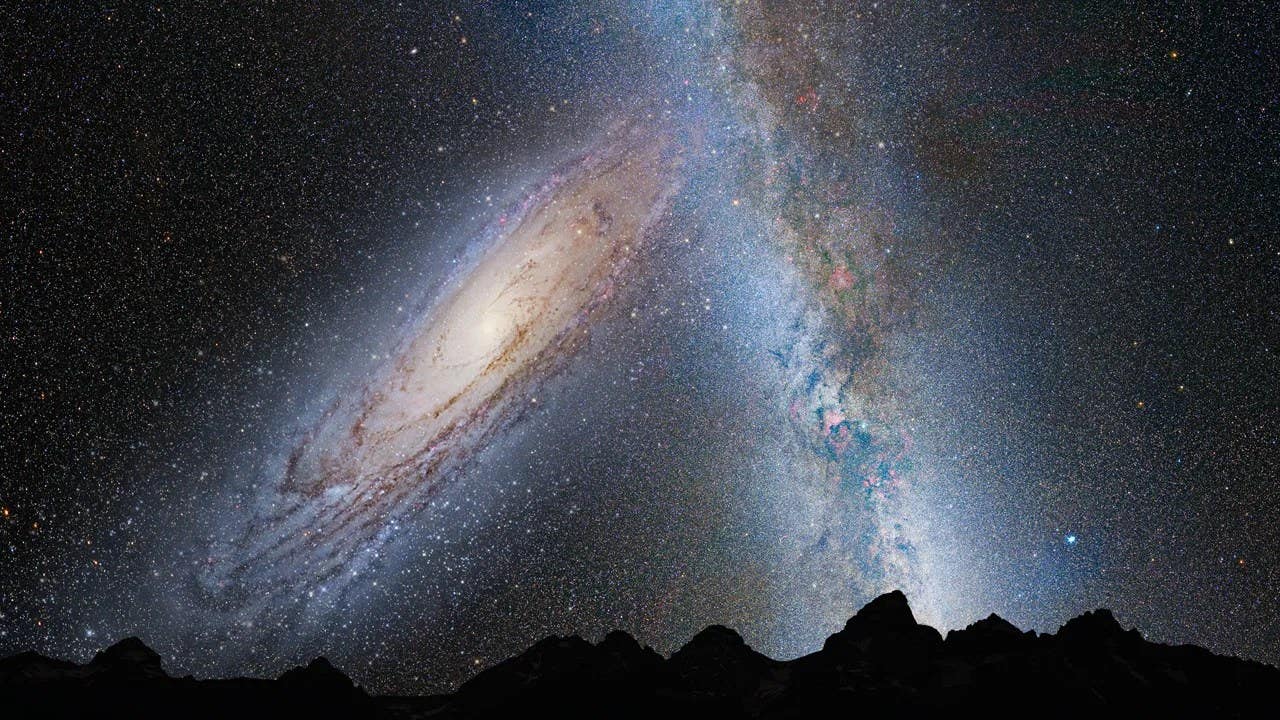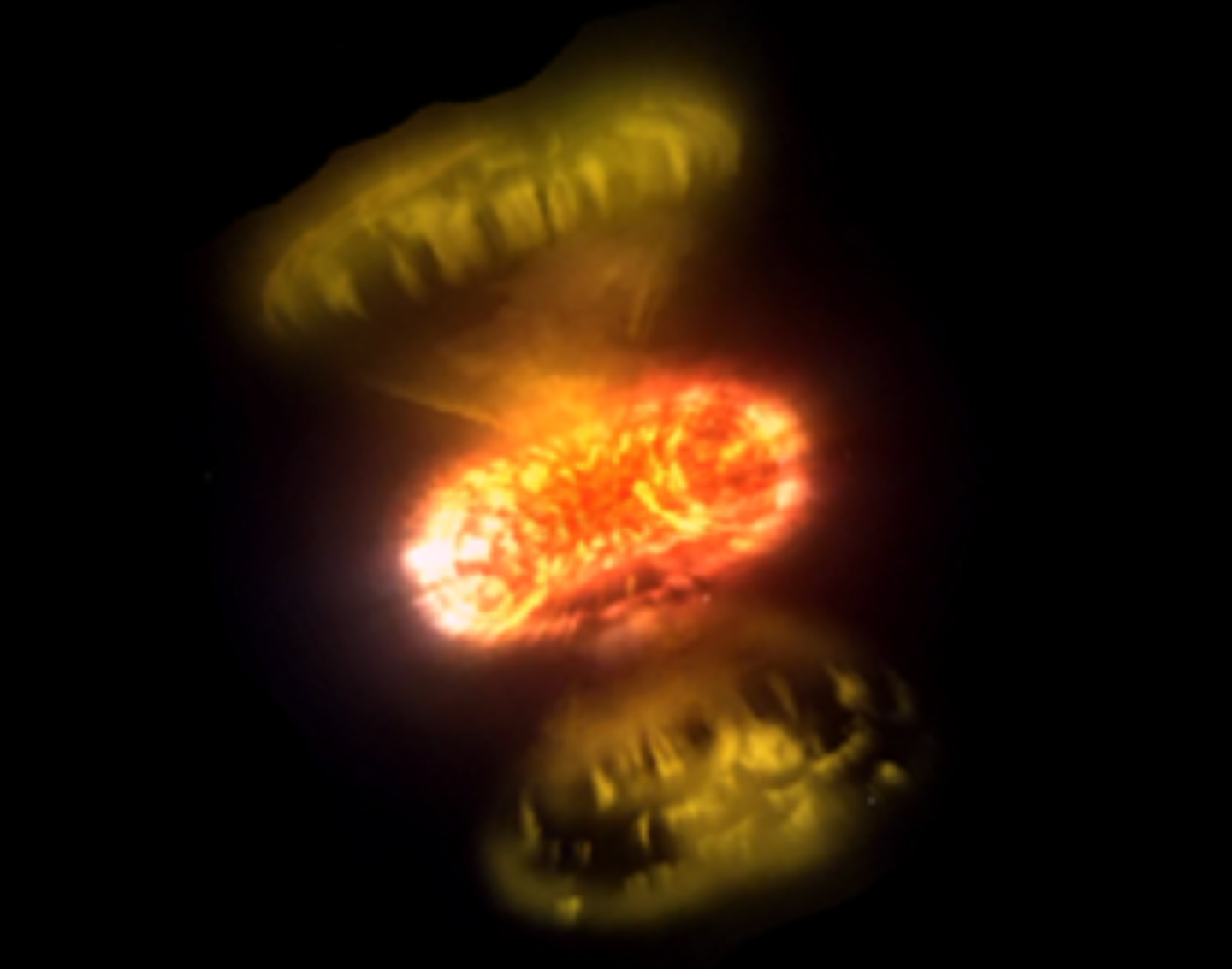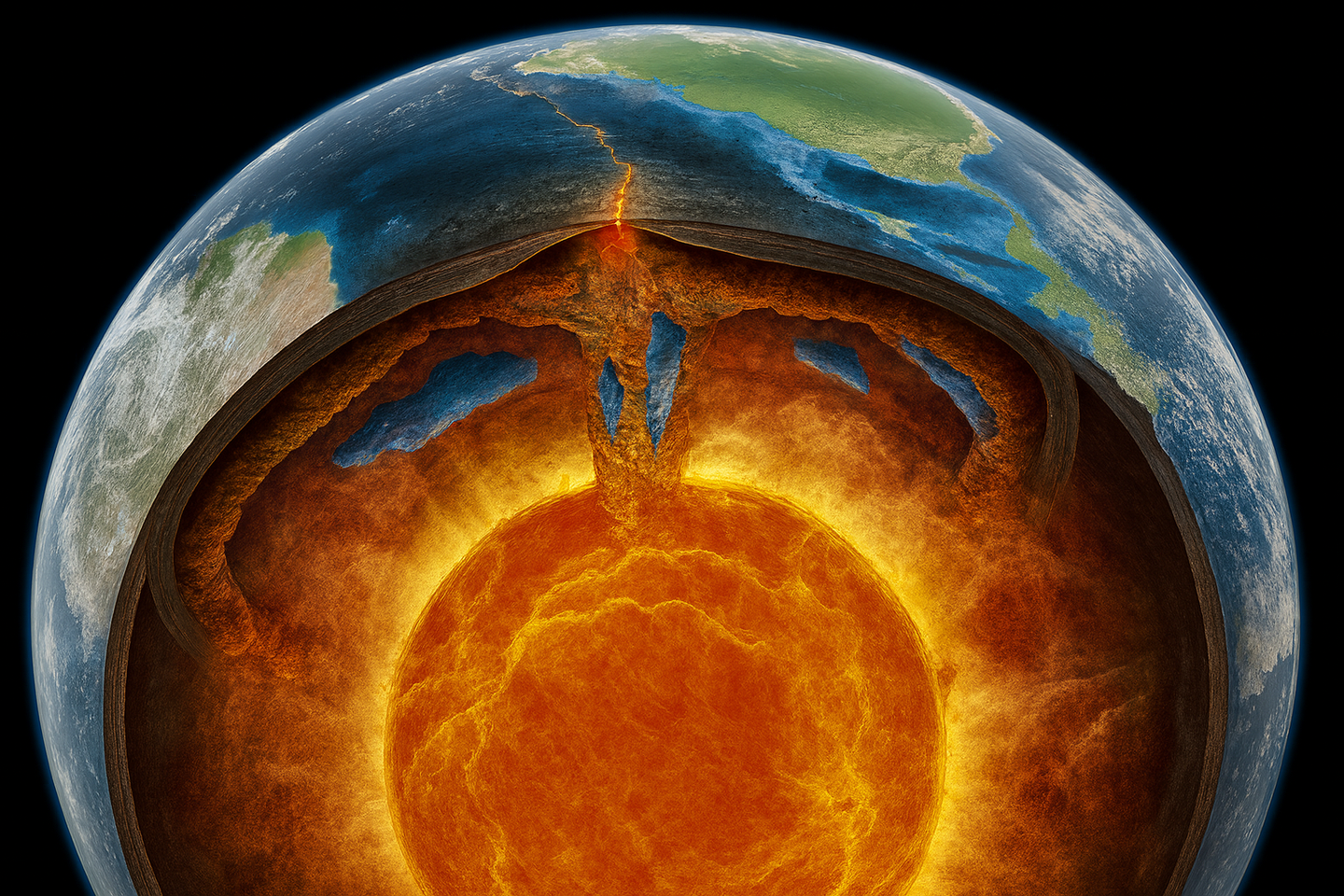New data predicts a 50% chance that the Milky Way and Andromeda galaxies will collide
New simulations show a 50% chance the Milky Way and Andromeda galaxies might avoid a predicted collision entirely.

Scientists have long thought the Milky Way galaxy would someday collide with its closest neighbor, Andromeda. (CREDIT: NASA; ESA; Z. Levay and R. van der Marel, STScI; T. Hallas; and A. Mellinger)
Scientists have long thought the Milky Way galaxy would someday collide with its closest neighbor, Andromeda. However, new research suggests the future of our cosmic home is more uncertain than previously believed.
A detailed study using data from NASA’s Hubble and the European Space Agency’s Gaia telescopes has revealed that the chances of a collision are about even—far from the inevitable scenario scientists once predicted.
Mapping the Cosmic Neighborhood
Our Milky Way and Andromeda are the two largest galaxies in the Local Group, a cluster that includes around a hundred smaller galaxies. Astronomers have known for over a century that Andromeda is moving towards us. More recent precise observations, including the minute motions measured by space telescopes, allowed scientists to calculate detailed trajectories and estimate when—or if—a collision could occur.
Led by Dr. Till Sawala of the University of Helsinki, researchers from Durham and Toulouse universities performed extensive simulations to analyze potential outcomes. They explored how the Milky Way, Andromeda, and their significant satellite galaxies, like M33 and the Large Magellanic Cloud (LMC), interact gravitationally.
Introducing Galactic Variables
The team conducted over 100,000 simulations incorporating updated astronomical data and uncertainties for the first time. Previous research had largely ignored uncertainties in measurements, leading to more definitive, but potentially misleading conclusions. By including these uncertainties, the researchers discovered far more diverse outcomes.
“In earlier studies, researchers often focused only on the most likely measurements,” said Dr. Sawala. "We've simply been able to explore a much larger space of possibilities, thanks to better data."
These simulations accounted for the current positions, velocities, and masses of the galaxies. The mass estimates were carefully derived, with the Milky Way mass set around one trillion solar masses. Andromeda's mass was slightly larger, while M33 and the LMC had significantly less mass but still enough to affect interactions considerably.
Related Stories
The Role of Satellite Galaxies
The influence of M33 and the LMC proved crucial. M33 slightly increased the likelihood of a merger because its mass helps pull Andromeda closer. Conversely, the LMC, which orbits perpendicular to Andromeda’s approach, considerably reduced merger probability.
"Although the LMC's mass is only around 15% that of the Milky Way, its gravitational pull significantly perturbs our galaxy’s motion," explained Dr. Sawala. “This drastically lowers the odds of collision.”
Before accounting for uncertainties, most simulations anticipated a near-certain collision within five billion years. But now, with a broader dataset and more precise modeling, that collision probability over the next five billion years drops to just 2%.
A Cosmic Collision—Or Just a Close Pass?
The new data suggest several possibilities for the Milky Way-Andromeda encounter. In about half the simulated scenarios, the galaxies had close encounters first, then merged between eight and ten billion years from now. By that time, our Sun would have long burned out.
In nearly half the other simulations, the galaxies passed harmlessly by each other, evolving independently for billions more years.
Professor Alis Deason from Durham University's Institute for Computational Cosmology highlighted these findings. "These results significantly alter our understanding of our galaxy’s fate. We once thought we’d merge to form a colossal galaxy nicknamed ‘Milkomeda.’ Now, there's a real chance we might avoid this entirely."
Future Insights from Improved Data
The researchers expect even more accurate results soon. Upcoming observations from the Gaia telescope will refine the precise motions and velocities involved, especially the challenging measurements of Andromeda’s transverse movements.
"The universe constantly evolves," emphasized cosmologist Professor Carlos Frenk of Durham University. "Until now, we believed our galaxy's destiny was fixed. Now, it seems we have a chance to avoid this dramatic fate altogether."
Frenk marvels at the advancements in astronomical science. "I’m astonished we can simulate such vast star collections over billions of years and determine their eventual fate," he said. "This truly showcases the power of modern physics and computing."
The research team stresses their findings don't invalidate previous studies. Instead, they expand possibilities, showing how sensitive these massive galactic events are to minor variations in measurements.
"When we used the same initial assumptions as earlier studies, we found the same results," clarified Dr. Sawala. "The difference now is we have a broader set of data to explore, making our predictions more nuanced."
Final Thoughts on Our Galactic Future
While the updated simulations don’t guarantee our Milky Way will avoid collision, they certainly give hope it might. Future research and more detailed data collection will likely clarify the eventual cosmic fate of our galaxy.
Professor Frenk summarized the broader significance of this discovery: "Galaxies collide frequently across the universe, often dramatically reshaping their structures. Our galaxy’s uncertain fate is a powerful reminder of how dynamic and complex the universe truly is."
Research findings are available online in the journal Nature Astronomy.
Note: The article above provided above by The Brighter Side of News.
Like these kind of feel good stories? Get The Brighter Side of News' newsletter.



